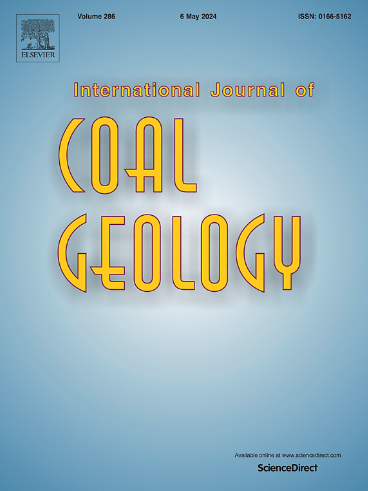Characterization and upgrading of a new Mozambican graphite ore for the production of graphene materials
IF 5.7
2区 工程技术
Q2 ENERGY & FUELS
引用次数: 0
Abstract
This study investigates the mineralogical characteristics of Mozambique graphite, with a particular focus on the Ancuabe deposit, located in the Cabo Delgado Province of northern Mozambique. Analysis of the mineralogy of the ore shows the presence of large flakes of graphite in parallel veinlets that follow the strike of the main foliation and in a disseminated form with structures that feature massive, highly foliated schists. The ore's mineral composition, as determined by XRF is dominated by SiO2 (∼75 %), containing <0.5 wt% of critical raw materials as Ti, V, Ni, and Cr. Approximately 30 % of the ore is carbon, which is attributed to graphite as determined by XRD, Raman spectroscopy and optical microscopy.
The potential of these graphite deposits to serve as a raw material in the production of graphene was examined. For that, the graphite ore was purified through size fractionation, employing standard graphite purification methods. The total graphite, along with the graphite fractions, were utilised as raw material for the preparation of graphene oxide (GO) via standard chemical oxidation and exfoliation methods. The monolayers of GO obtained from the whole graphite fraction exhibited the typical oxidation of basal planes and edges but were obtained at a low yield. However, this yield was enhanced by subjecting the three graphite fractions to an optimized procedure, which involved employing longer reaction times with the larger-sized graphite fractions. Consequently, the overall process yield was significantly increased, and it was also possible to obtain GO sheets of controlled lateral size, ranging from very large to small.
用于生产石墨烯材料的莫桑比克新石墨矿石的表征和升级
本研究调查了莫桑比克石墨的矿物学特征,特别关注位于莫桑比克北部德尔加多角省的Ancuabe矿床。对矿石的矿物学分析表明,在沿主片理走向的平行细脉中存在大块石墨薄片,并以浸染状的形式存在,其结构特征是块状的、高度片理的片岩。根据XRF测定,矿石的矿物组成主要是SiO2(~ 75%),含有<;0.5 wt%的关键原料,如Ti, V, Ni和Cr。大约30%的矿石是碳,通过XRD,拉曼光谱和光学显微镜测定,这归因于石墨。研究了这些石墨沉积物作为石墨烯生产原料的潜力。为此,采用标准的石墨提纯方法,对石墨矿石进行粒度分选提纯。通过标准的化学氧化和剥离方法,将总石墨和石墨馏分作为制备氧化石墨烯(GO)的原料。从整个石墨馏分中得到的氧化石墨烯单层表现出典型的基面和边缘氧化,但收率较低。然而,通过对三种石墨组分进行优化处理,提高了产率,其中包括使用更长的反应时间和更大尺寸的石墨组分。因此,整体工艺收率显着提高,并且还可以获得横向尺寸可控的氧化石墨烯薄片,范围从非常大到很小。
本文章由计算机程序翻译,如有差异,请以英文原文为准。
求助全文
约1分钟内获得全文
求助全文
来源期刊

International Journal of Coal Geology
工程技术-地球科学综合
CiteScore
11.00
自引率
14.30%
发文量
145
审稿时长
38 days
期刊介绍:
The International Journal of Coal Geology deals with fundamental and applied aspects of the geology and petrology of coal, oil/gas source rocks and shale gas resources. The journal aims to advance the exploration, exploitation and utilization of these resources, and to stimulate environmental awareness as well as advancement of engineering for effective resource management.
 求助内容:
求助内容: 应助结果提醒方式:
应助结果提醒方式:


